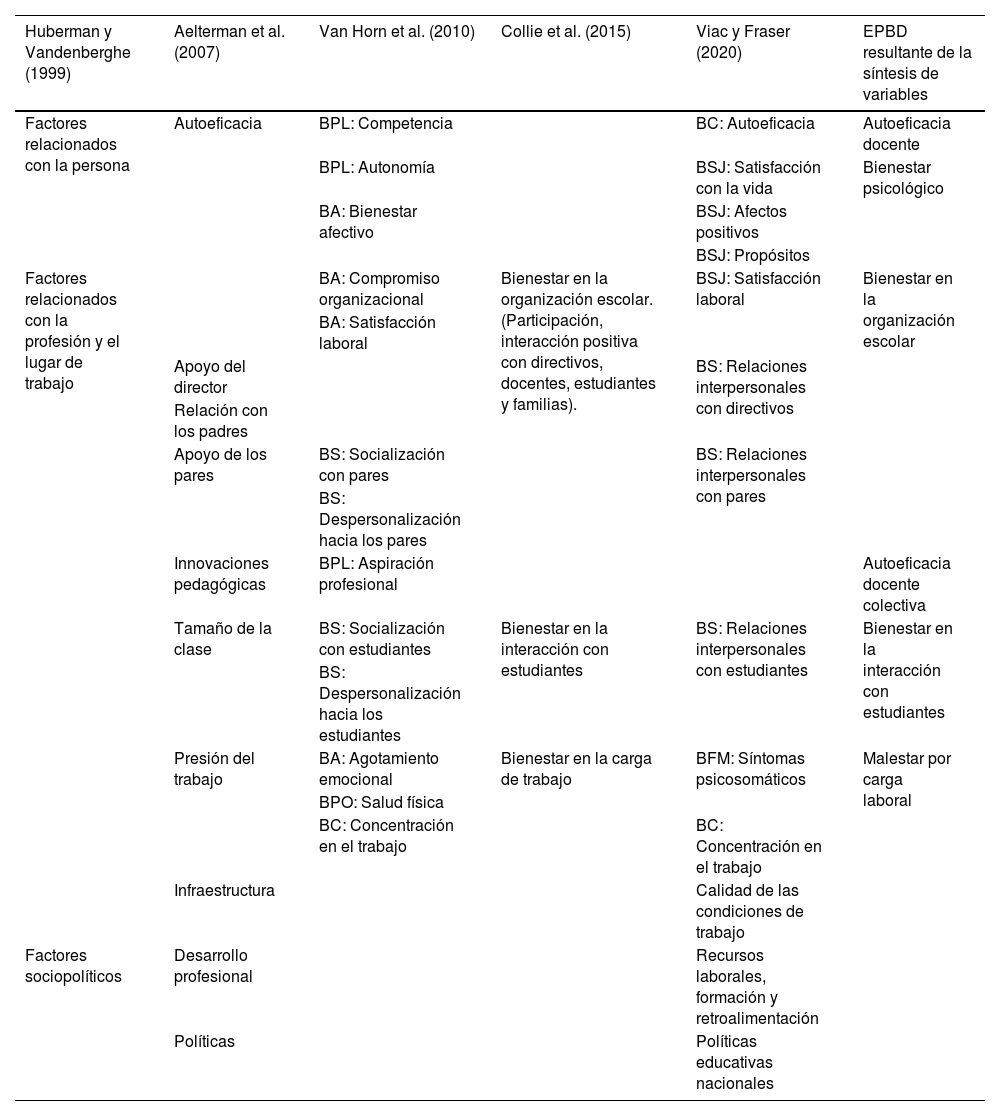Se indica al bienestar docente como un elemento crucial para la labor educativa. Sin embargo, su configuración permanece confusa debido a la heterogeneidad con que se ha abordado su análisis. Este trabajo ha puesto a prueba tres modelos de medida que explican la configuración de dicho constructo a partir de seis variables que han sido identificadas como relevantes: autoeficacia docente, bienestar psicológico, malestar por carga laboral, bienestar en la organización escolar, bienestar en la interacción con estudiantes y autoeficacia docente colectiva. Se ha realizado una investigación transversal con medidas de autorreporte y modelos de ecuaciones estructurales. Los análisis también han considerado una variable opuesta: desgaste profesional en la escuela. Han participado 364 docentes de 13 escuelas de la Región de Tarapacá, Chile. Los resultados han mostrado el ajuste de un modelo que explica una variable latente denominada estructura psicológica del bienestar docente y que posee una configuración multidimensional, interaccional y situada en organizaciones escolares. Los elementos centrales de este modelo son variables contextuales, susceptibles de ser mejoradas al interior de cada escuela mediante un desarrollo colectivo. Esto desafía a los sistemas educativos nacionales a promover el bienestar docente desde la autonomía escolar.
Teacher well-being is recognized as a crucial element in educational work. However, its configuration remains unclear due to the heterogeneity with which its analysis has been approached. This study has tested three measurement models that explain the configuration of this construct based on six variables that have been identified as relevant: teacher self-efficacy, psychological well-being, discomfort due to workload, well-being in the school organization, well-being in student interaction, and collective teacher self-efficacy. A cross-sectional investigation with self-report measures and structural equation models was conducted. The analyses also considered an opposing variable: Professional Burnout in the School. A total of 364 teachers from 13 schools in the Tarapacá Region, Chile, participated. The results have shown the fit of a model that explains a latent variable called the psychological structure of teacher well-being, which has a multidimensional, interactional configuration situated within school organizations. The central elements of this model are contextual variables that can be improved within each school through collective development. This challenges national educational systems to promote teacher well-being through school autonomy.
Artículo
Comprando el artículo el PDF del mismo podrá ser descargado
Precio 19,34 €
Comprar ahora














